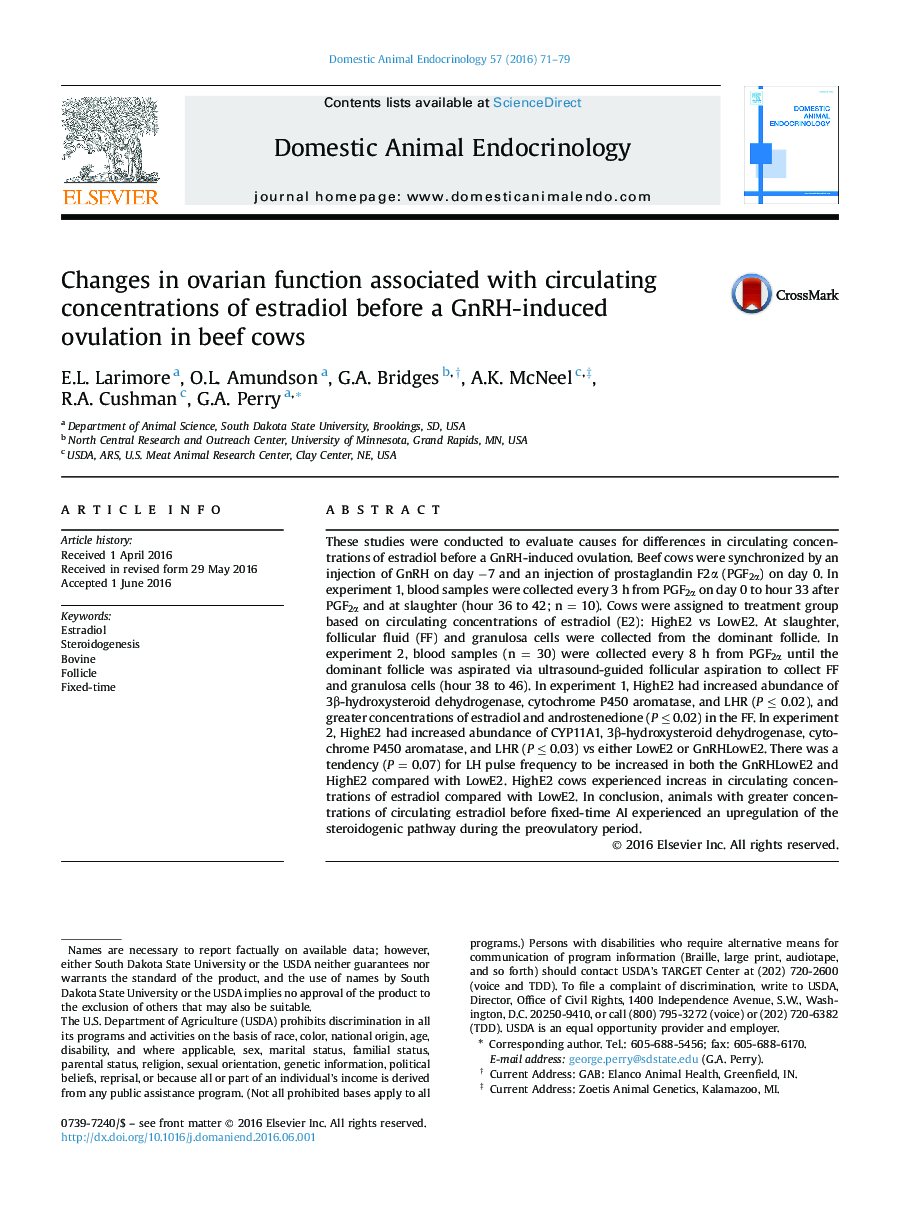| Article ID | Journal | Published Year | Pages | File Type |
|---|---|---|---|---|
| 2393411 | Domestic Animal Endocrinology | 2016 | 9 Pages |
These studies were conducted to evaluate causes for differences in circulating concentrations of estradiol before a GnRH-induced ovulation. Beef cows were synchronized by an injection of GnRH on day −7 and an injection of prostaglandin F2α (PGF2α) on day 0. In experiment 1, blood samples were collected every 3 h from PGF2α on day 0 to hour 33 after PGF2α and at slaughter (hour 36 to 42; n = 10). Cows were assigned to treatment group based on circulating concentrations of estradiol (E2): HighE2 vs LowE2. At slaughter, follicular fluid (FF) and granulosa cells were collected from the dominant follicle. In experiment 2, blood samples (n = 30) were collected every 8 h from PGF2α until the dominant follicle was aspirated via ultrasound-guided follicular aspiration to collect FF and granulosa cells (hour 38 to 46). In experiment 1, HighE2 had increased abundance of 3β-hydroxysteroid dehydrogenase, cytochrome P450 aromatase, and LHR (P ≤ 0.02), and greater concentrations of estradiol and androstenedione (P ≤ 0.02) in the FF. In experiment 2, HighE2 had increased abundance of CYP11A1, 3β-hydroxysteroid dehydrogenase, cytochrome P450 aromatase, and LHR (P ≤ 0.03) vs either LowE2 or GnRHLowE2. There was a tendency (P = 0.07) for LH pulse frequency to be increased in both the GnRHLowE2 and HighE2 compared with LowE2. HighE2 cows experienced increas in circulating concentrations of estradiol compared with LowE2. In conclusion, animals with greater concentrations of circulating estradiol before fixed-time AI experienced an upregulation of the steroidogenic pathway during the preovulatory period.
